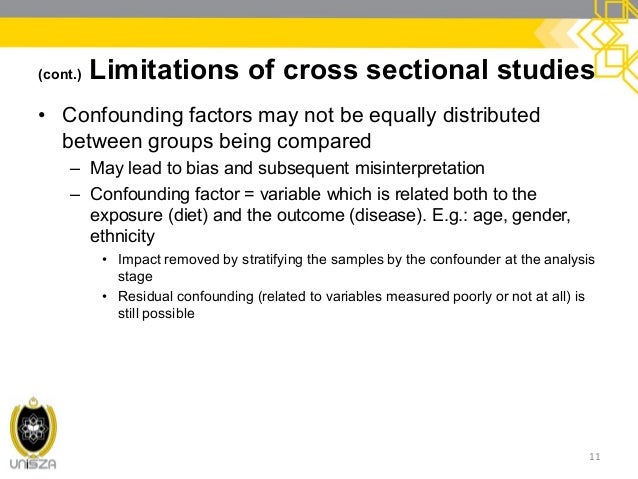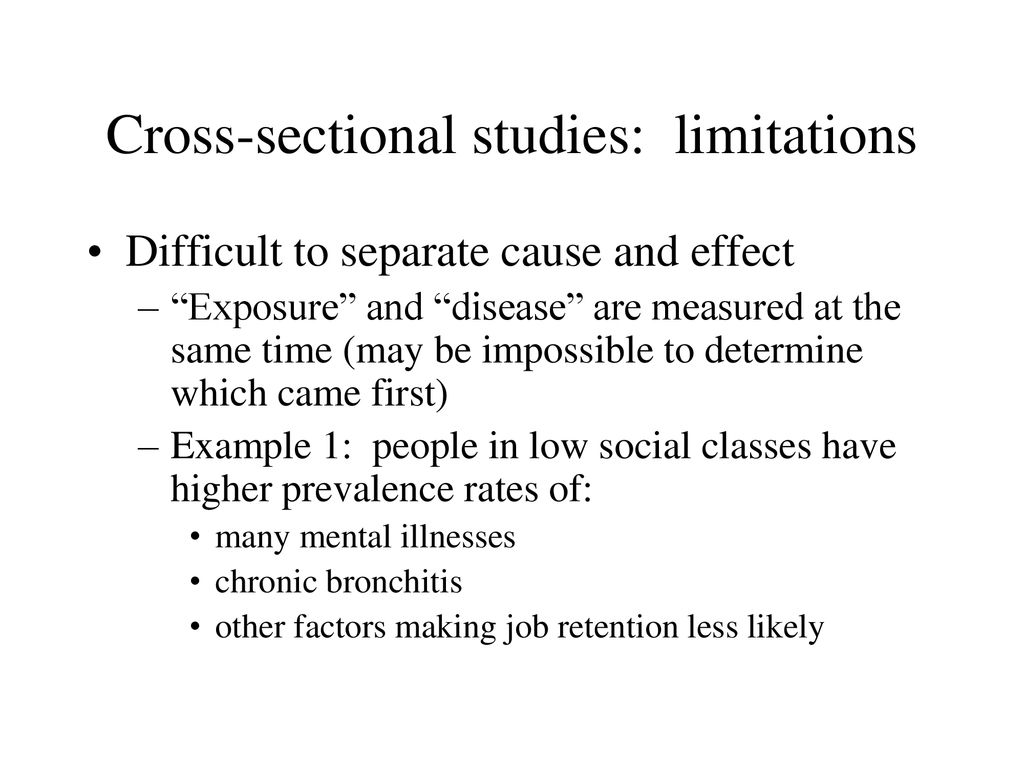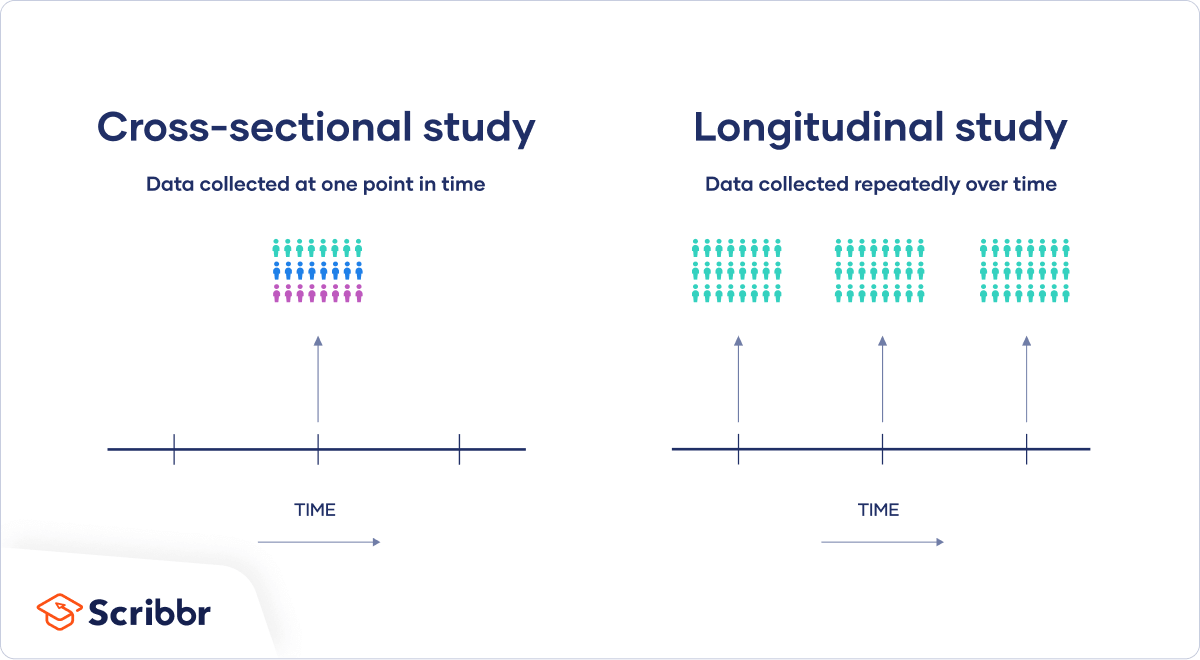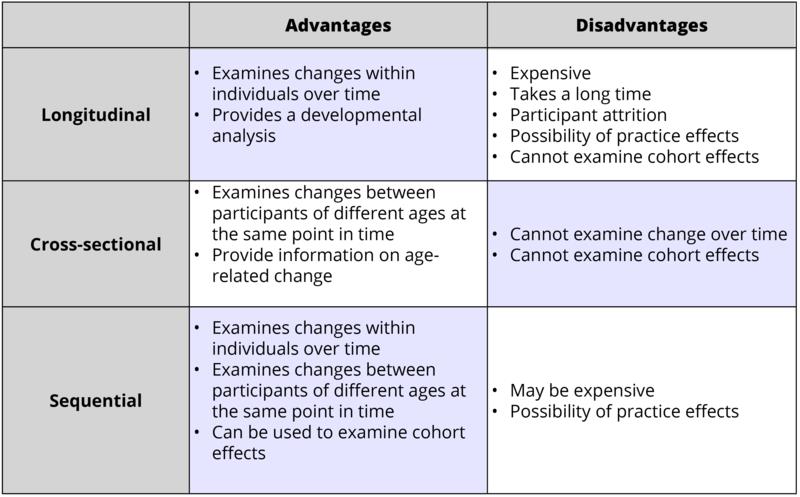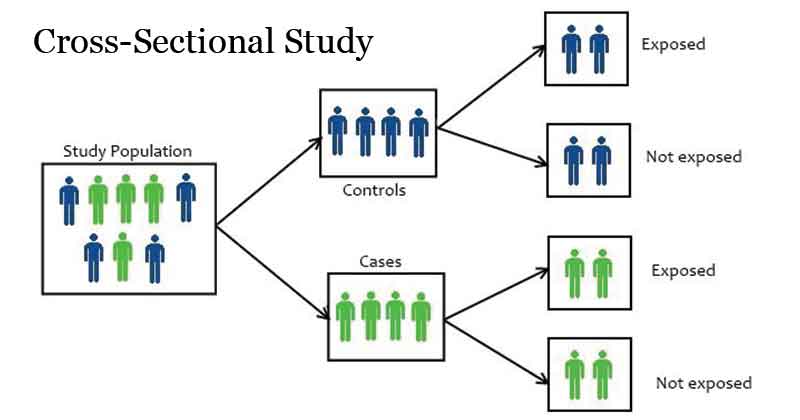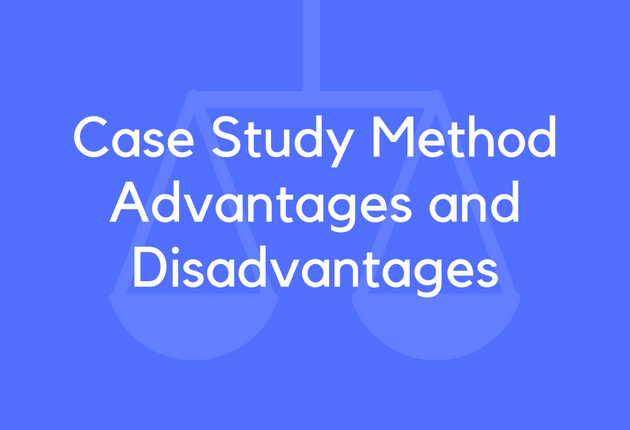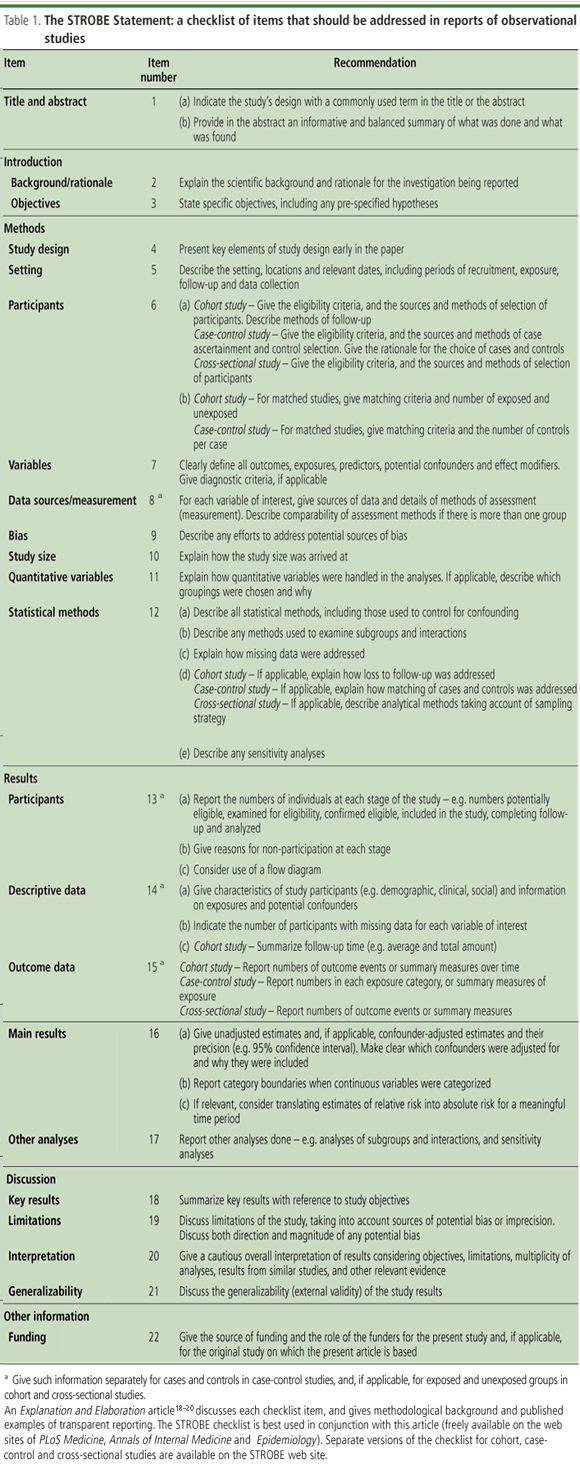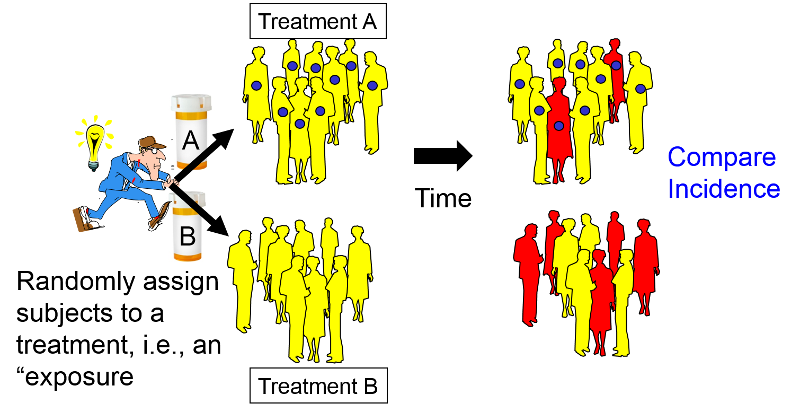Cross Sectional Study Limitations

Cannot be used to analyze behavior over a period to time.
Cross sectional study limitations. A cross sectional study has defined characteristics that limit the size and scope of the work. While the cross sectional approach to research has many advantages it naturally has its limitations and disadvantages too. Longitudinal studies may be prospective or retrospective and observational or experimental in design.
That means there are fewer risks to manage if tangents begin to develop in the data. Unable to measure incidence. Associations identified may be difficult to interpret.
The timing of the snapshot is not guaranteed. Does not help determine cause and effect. In a longitudinal study each participant is observed at multiple time points thereby allowing trends in an outcome to be monitored over time.
As cross sectional studies measure prevalent rather than incident cases the data will always reflect determinants of survival as well as aetiology 1 unable to measure incidence. Two distinct variables are measured at the same point in time. Susceptible to bias due to low response and misclassification due to recall bias.
As cross sectional studies measure prevalent rather than incident cases the data will always reflect determinants of survival as well as aetiology. Cross sectional studies can say that the two are related somehow but they cannot positively determine if one caused the other. The snapshot nature of cross sectional studies while convenient does have its downside in that it doesn t provide a good basis for establishing causality.
A cross sectional study is not longitudinal by design a is false. The goal is to look for a meaningful result within an expected boundary. Researchers look at specific relationships that happened during a particular moment in time.
